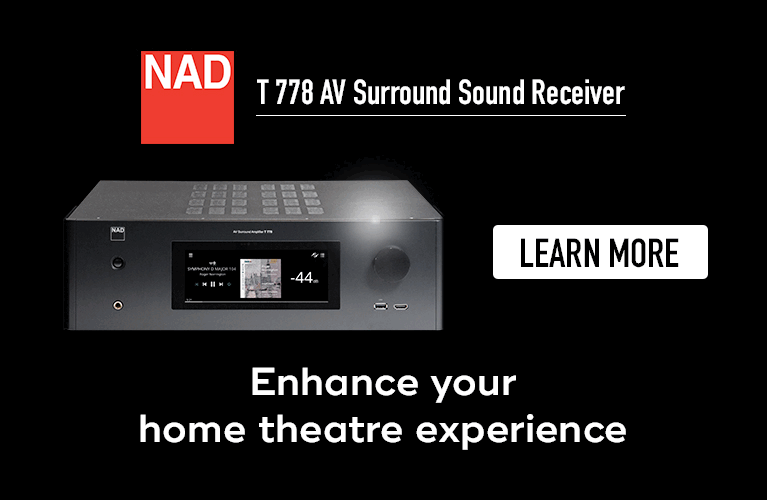 For nearly a hundred years now the Luxman Corporation of Japan has continuously manufactured high-quality, specialty audio products. The sound quality of many of these products have stood the test of time -- including that of the SQ-38 tubed integrated amplifier, which debuted in 1964 and is still sought on the used market. Its “38”-badged descendants have fared similarly, culminating in the 11th iteration, the SQ-38u, of a decade or so ago.
For nearly a hundred years now the Luxman Corporation of Japan has continuously manufactured high-quality, specialty audio products. The sound quality of many of these products have stood the test of time -- including that of the SQ-38 tubed integrated amplifier, which debuted in 1964 and is still sought on the used market. Its “38”-badged descendants have fared similarly, culminating in the 11th iteration, the SQ-38u, of a decade or so ago.
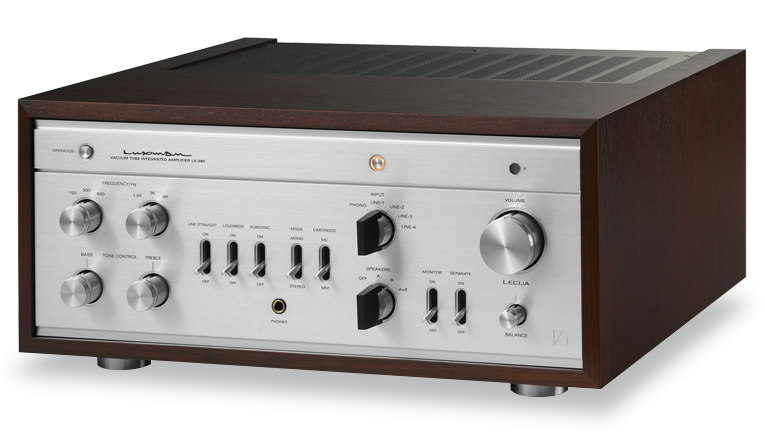
One might assume that such continued demand means that these amps are something special. Having heard an older SQ-38FD, I’d say that assumption is correct -- it was one of the amps responsible for getting me hooked on tubes. According to Luxman, this lineage was the inspiration for their latest tubed integrated amplifier, the LX-380. It certainly looks cut from the same cloth as the ’38s of yore, with its retro styling, wood-paneled case, and bevy of features. But its retail price of $7995 USD made me think that the LX-380, if it was to compete in the market for premium amps, had better serve up something special in its own right.
Description
Having unpacked the review sample of the Luxman LX-380, I couldn’t help but admire its build quality. I’d seen pictures of it, but found it a different thing entirely to set my own eyes and hands on its lovely hardwood enclosure, faceplate of well-machined aluminum, and overall fine fit’n’finish. The Luxman LX-380’s visual design harks back to another era of audiophilia, making it look like something quite different from the typically sleek, austere mien of today’s amplifiers. This fan of vintage-inspired audio found the LX-380 refreshingly attractive. Even its knobs and switches are well made and feel good to the touch, and all jacks and receptacles are of equally high quality.
Speaking of knobs and switches, the LX-380’s faceplate has plenty -- in the finest Luxman tradition, it is, by today’s standards, a highly featured amp. Notable is its quartet of tone-control knobs: one pair of Bass and Treble knobs, and an associated pair labeled Frequency/Hz, with settings of 150, 300, and 600 Hz (Bass), and 1.5, 3, and 6kHz (Treble). To their right are On/Off toggle switches for Line Straight, a Loudness contour, and a Subsonic filter, followed by toggles for Stereo/Mono and Cartridge MC/MM.
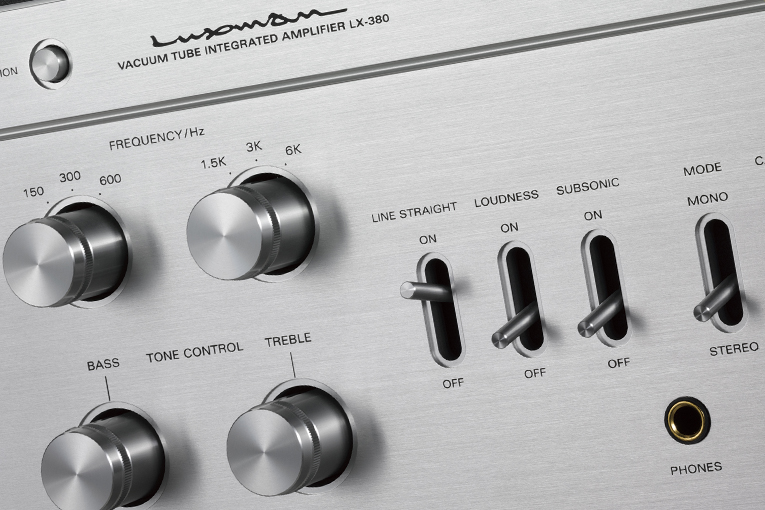
Below that row of toggles is the headphone jack, and to their right is a column of two knobs: the upper, labeled Input, has positions for Phono and Line-1 through Line-4; the lower knob, Speakers, can be set to Off, A, B, or A+B. To the right of these knobs are two more On/Off toggles, for Monitor and Separate, followed by a small Balance knob surmounted by a large Volume knob. On the upper-left side, above a narrow band running near the top of the faceplate, is an Operation (power) button. About the volume control, Luxman states, “The LX-380 is the first vacuum tube amplifier to feature LECUA, the proprietary computerized control attenuator from LUXMAN that enables the sound to be adjusted smoothly with minimal deterioration using an 88-step method.”
The inputs and outputs on the rear panel comprise four pairs of line-level and one pair of phono inputs, a monitor/record loop, pre-out and main-in jacks, four pairs of speaker terminals for Speakers A and B, and a ground post. The included remote handset has controls for volume, muting, and functions for Luxman CD players.
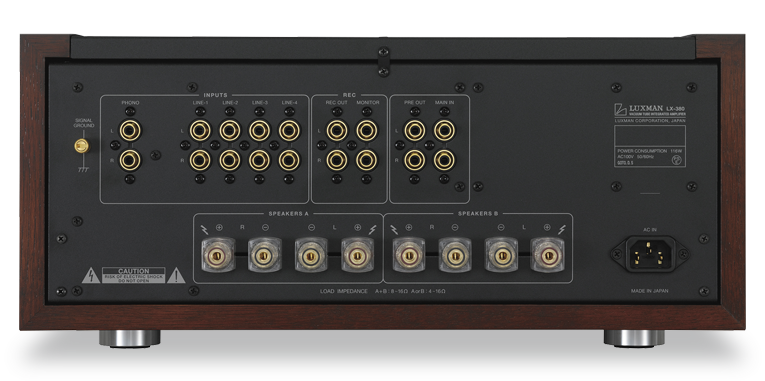
The Luxman LX-380 measures 17.3”W x 7.8”H x 15.9”D and weighs 38.8 pounds. Its power output is specified as 18, 20, or 16Wpc into 8, 6, or 4 ohms, respectively. Its claimed phono input sensitivity and impedance are 3mV and 47k ohms (MM) or 0.38mV and 100 ohms (MC). Two frequency responses are specified: 20Hz-20kHz, ±0.5dB (phono); and 20Hz-80kHz, +0/-3.0dB (line). The amplifier is based on a fixed-bias, class-A/B, push-pull topology with three 12AU7 tubes in a Mullard driver circuit, followed by one pair of tetrode-connected 6LCGC output tubes per channel. I asked Luxman about using other tube types, and received a long and informative reply that included these paragraphs:
In most cases, Luxman’s vacuum tube manufacturing partners provide a select grade of tube benefiting from 100% Q.A./Q.C. prior to shipment to Luxman. In addition, Luxman re-checks all incoming tubes before installing them. . . . Each Luxman unit then undergoes further testing and “burn-in” with the tube complement installed. Careful tube biasing is performed, with measurements factory recorded. . . .
These facts enable Luxman America, Inc. to offer the full three year warranty on amplification units AND their factory supplied tubes, provided the factory supplied tubes remain in their original factory-installed position. Removing or replacing the factory tubes voids any remaining warranty for the tubes; warranty would of course continue in force for the main amplifier unit.
Given that, one should feel quite comfortable sticking with the Luxman’s stock tube types, not only to keep the three-year warranty in effect, but also for optimal sound -- as I did for the duration of my listening.
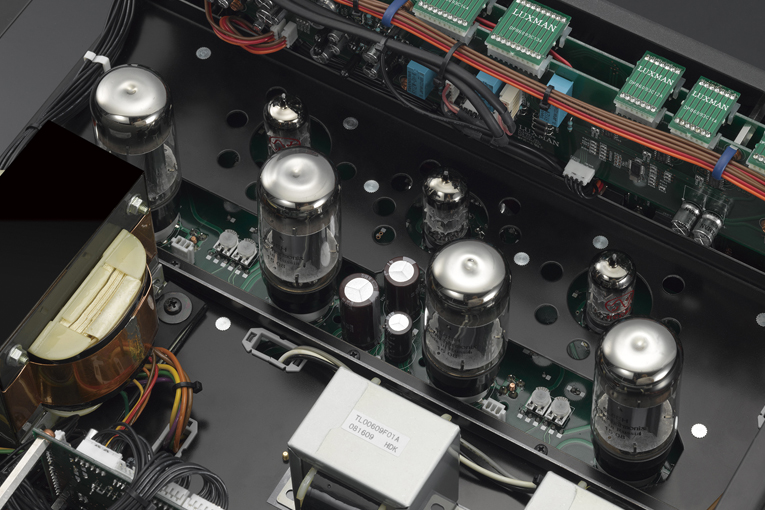
Sound
Setting up the Luxman LX-380 was straightforward -- after all, its tubes come preinstalled. I left Line Straight on for most of my listening, preferring to hear this amp drive my Klipsch Epic CF2 speakers without any equalization from the tone controls. I did, however, use the Mono switch for monaural records. After letting the Luxman run in for a sufficient amount of time, I sat down for a listen.
All it took was a few bars of music for me to hear that the LX-380 was something special: an amplifier with a sound that was intrinsically believable, wholly natural, realistically textured, and eminently colorful -- in short, an audio component that made music. It accomplished this by communicating music’s underpinnings -- the associated qualities of drama, scale, and impact; the full dynamic range; the timing and momentum -- better than most modern amplifiers I’ve heard, regardless of technology or price. It got out of the way and let the music speak for itself.
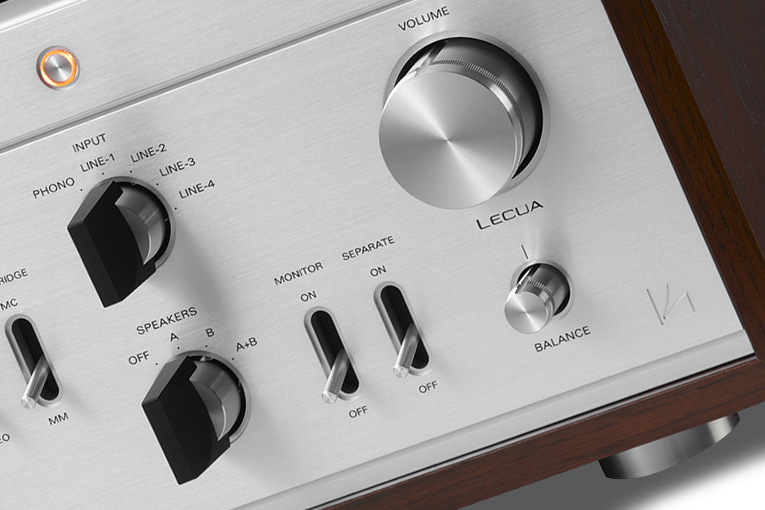
This was proven to my satisfaction by my playing cellist Alisa Weilerstein’s recording of Shostakovich’s Cello Concerto No.1, with Pablo Heras-Casado conducting the Bavarian Radio Symphony Orchestra (24-bit/192kHz AIFF, Decca). Through the Luxman, Weilerstein’s cello sounded huge and commanding -- less in the tonal or spectral sense (though that, too, would be accurate) than in how Weilerstein unleashes an immense and sonorous wellspring of emotive intensity from her cello’s strings, whose vibrations resonate and radiate through the instrument’s soundbox. The LX-380 captivatingly conveyed this effect, allowing this instrument to sound as wonderfully forceful, dramatic, and powerful as it should.
The Luxman also provided a direct connection to the music’s stylistic elements, letting me feel as if I’d been granted greater insight into this soloist’s interpretive choices, and listening for those first. I could better hear how Weilerstein’s pitch-perfect, dynamically expressive playing in the cadenza ideally matches this work’s sweeping power, even as I sat in awe of her seemingly effortless virtuosity, noticing how, at times, she deliberately reduces her carefully considered vibrato so as not to dominate the message of a particular passage. Color me impressed.
Recording after recording, the LX-380 worked a similar magic with music’s dramatic elements, including with the Digable Planets’ Reachin’ (A New Refutation of Time and Space) (LP, Elektra 3360614144). The horn-section melody in “What Cool Breezes Do” blared from my speakers with the kind of realism best described as, again, forceful and powerful, instantly pressurizing the room with sound. So, too, did the hard-hitting, high-velocity cymbal and hi-hat strokes in “Nord Perdu,” from Alexandre Côté’s Portraits d’Ici (24/96 FLAC, Effendi) -- they shimmered with realistic presence, scale, and decay. Through the Luxman, these instruments sounded more like the micro-explosive events they are when heard in concert, rather than how they sound through nearly every other single-box amp I’ve heard.
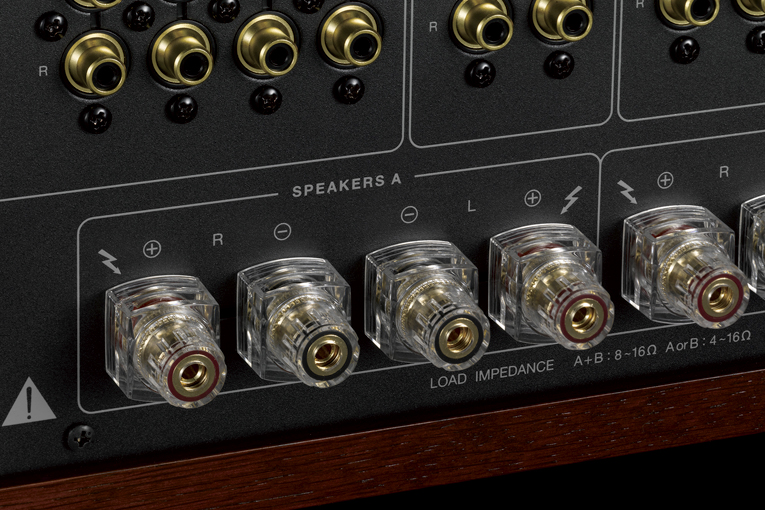
The LX-380 also delivered the dynamic goods. Portraits d’Ici scaled from soft to loud in thrilling fashion, blowing down the walls with the climactic horn chorus and drummer Rich Irwin’s explosiveness. With Joshua Redman’s Trios Live (24/88.2 AIFF, Nonesuch), every ferocious snap, crackle or pop of sticks on snare or crash cymbal, or kick pedal on drum, of Gregory Hutchinson’s searingly hot drumming lit up these tunes like Fourth of July fireworks. And when it came to microdynamics, such as the double-bass solo in “Mantra #5,” the attacks of plucked strings had a realistic tactility and presence as bassist Matt Penman varied the volume, lingering on certain notes for emphasis.
Back to the Digable Planets -- “Where I’m From” did a fine job of showing off the Luxman’s penchant for the temporal unraveling of dense musical passages. I could easily hear how singer Ladybug Mecca accentuates her timing on the backbeat for some ingeniously poetic syncopation, her smooth, subtle, quick-moving phrasing coming through with lucid clarity and fine enunciation of syllables thanks to the LX-380’s ability to reproduce propulsive momentum and flow. In fact, voices in general retained all their gorgeous tonality, even as each sung word was cleanly enunciated and easily understood. Experiencing such detail made hearing this album through the LX-380 one of the most musically satisfying experiences I’ve had in the nearly 30 years I’ve been listening to it.
Thus far, I’ve mostly described the Luxman LX-380’s music-making abilities instead of its purely sonic qualities, and for good reason: It was fantastically adept at making beautifully riveting and emotionally compelling music. But the LX-380 also just plain sounded good, in the best ways possible: It was smooth, clear, and eminently listenable, with perhaps just a hint more warmth and slight mellowness compared to its most clinical-sounding solid-state brethren and an ever-so-slight diminution in the lowest octaves.
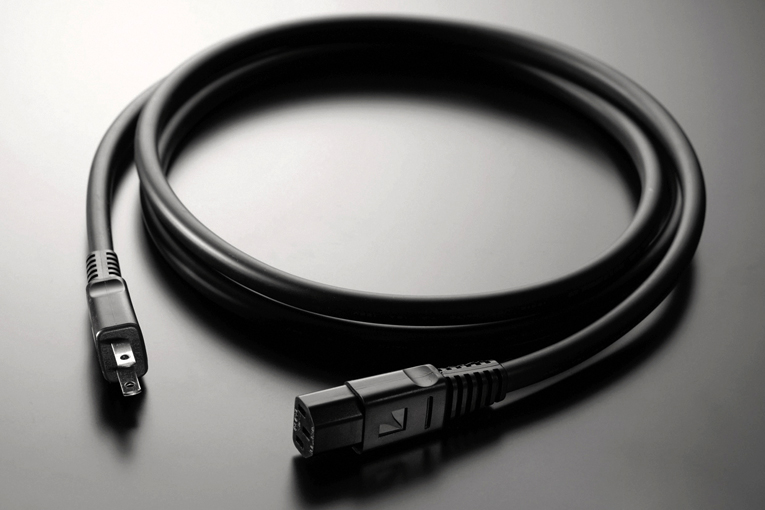
When I listened again to Weilerstein’s Shostakovich, I heard again how the Luxman LX-380 remained unerringly faithful to instrumental tone, timbre, and color. Her gorgeous cello sounds were realistically true and correct; brass sounded like brass, and woodwinds like woodwinds. The celesta in the second movement, Moderato, sounded particularly, even surprisingly lifelike.
Male voices, too -- such as D’Angelo’s, in the title track of his Brown Sugar (16/44.1 WAV, Virgin) -- were vividly present, buttery smooth, and mesmerizingly soulful. Female voices, such as Elizabeth Fraser’s in “Black Milk,” from Massive Attack’s Mezzanine (16/44.1 WAV, Virgin), could also be ethereally real and eerily haunting. I may have heard a very minor highlighting of the midrange and vocal regions, but that could very well have largely been due to the Klipsch Epic CF2s’ revealing nature. Still, this highlighting was never offensive, and it wasn’t something I heard with other vocal recordings or unless I was conducting a direct comparison.
The LX-380’s phono stage turned out to be no mere afterthought. Its accomplished sound quality matched the rest of the amp’s overall neutral sound, and I could enjoyably listen to a variety of musical genres on vinyl without fatigue. Where it erred, it did so by omission rather than commission, shaving off some realism here, some liquidity there, and some palpable presence all around, instead of adding any obvious colorations. It got the notes and the beats and the fundamentals right, and could serve as a great starter phono section for those eager to hear what vinyl has to offer. If vinyl is only an occasional or secondary format for you, I’m guessing you’ll be plenty satisfied with the Luxman’s pleasant-sounding, musically capable phono stage.
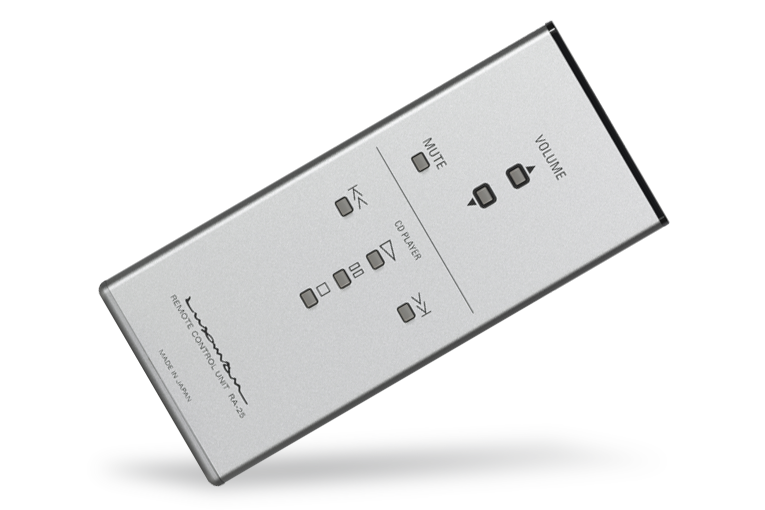
The LX-380's headphone section is also surprisingly good. Its sound mostly mirrored what I heard from the phono stage: spectrally correct, fundamentally musical, clean, transparent, and with an evenhanded balance. Though my experience with headphones is limited, I found the sound of the LX-380’s headphone amp quite satisfying, and would often listen this way late at night. Through Shure’s ultra-sensitive SE425 earphones I appreciated the Luxman’s supreme noiselessness in silent spaces between tracks and notes, especially in quiet or delicate passages. If you’re considering the LX-380 and, like me, are an occasional headphone user, you’ll probably find its headphone amp more than pleasantly sufficient.
Comparisons
I compared the Luxman LX-380 with my own reference integrated amplifier, Audio Note’s L3 EL84. Although the base-level L3, when last available, retailed for around a third of the Luxman’s price, the version I own has been heavily modified with Signature-level upgrades and beyond: silver wiring, a stepped attenuator, C-core transformers, and almost all of its internal components swapped out for boutique parts -- all of which brings its last price to about $7000 -- close enough to the LX-380’s $7995 for a fair comparison.
First up was “One Dance,” from Drake’s Views (16/44.1 WAV, Universal) -- the track’s catchy, beat-heavy groove showed off the timing prowess of the LX-380, which put this music’s dance-friendly vibe front and center. The Audio Note L3 EL84 couldn’t quite match the Luxman in this area, sounding slightly less rhythmically insistent, with a bit less forward momentum and drive. I got the same result with the title track of Majid Jordan’s EP A Place Like This (16/44.1 WAV, OVO Sound) -- the Luxman produced a tiny bit more propulsive rhythmic and timing acuity. But both amps did a fine job of getting the timing correct -- in absolute terms, the Audio Note wasn’t far behind the Luxman, in either the qualitative or temporal senses.
I heard a somewhat bigger difference in the amps’ low-end-to-lower-midrange responses. The deep-bass notes in “One Dance” and “A Place Like This” were more visceral and physical via the Audio Note, hitting harder and deeper. “Mrs. Cold,” from Kings of Convenience’s Declaration of Dependence (CD, Astralwerks V3062), confirmed this. Through the Luxman, the double bass and voices were spectrally flatter, with better note-to-note clarity and cleaner transients, while through the Audio Note they sounded deeper, richer, fuller. There was more boogie to the beat via the Luxman; the Audio Note made the bass a more room-resonating experience.
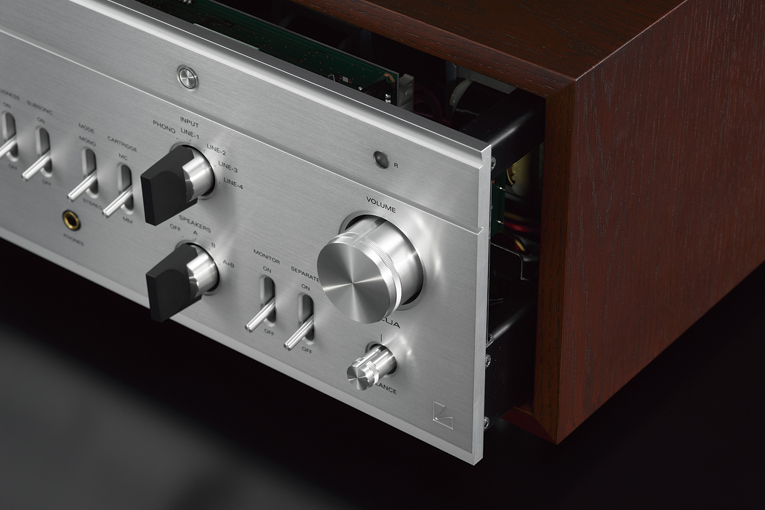
Both “Teardrop” and “Black Milk,” from Massive Attack’s Mezzanine, highlighted the Luxman’s strengths in the midrange. Fraser’s voice possessed beautiful texture and tone while remaining clean, with no muddiness or bloat. The Audio Note made Fraser’s vibrato sound less clear and distinct, and her singing, on the whole, less lilting and airy. But the LX-380 countered with more warmth and richness, especially with “Mrs. Cold,” to which the Audio Note brought greater solidity of sound and more in-room presence and realism.
In terms of spatial effects, the Audio Note consistently bettered the Luxman, though again the differences were minor. With the Audio Note, the hand claps in “Lotus Flower,” from Radiohead’s The King of Limbs (16/44.1 WAV, XL), extended beyond the left speaker’s outer sidewall; the Luxman confined these sounds close to the speaker’s edges. Individual instruments also felt more tangible and solid through the Audio Note, and more precisely placed on the soundstage. Still, both amps produced the well-proportioned soundstages and holographic images that are the hallmarks of good tube gear. I can’t imagine anyone not being satisfied by the spatial properties of either.
I could have spent an eternity comparing these amps -- each had its own set of strengths and no real weaknesses, and they were much closer in sound than they were different. Still, the Luxman sounded better balanced throughout the audioband. More important, the Luxman was every bit the Audio Note’s equal where it counted most: my overall involvement in the music. That’s something I hadn’t thought could be found in another integrated amplifier anywhere near the price of my greatly upgraded Audio Note. Given that such a high level of musicality can be had in an off-the-shelf, single-box integrated makes the winner a no-brainer: the Luxman LX-380.
Conclusion
The Luxman LX-380 isn’t merely something out of the ordinary. It is an extraordinary integrated amplifier that more than continues the legacy of its predecessors, and resoundingly reinforces Luxman’s ethos of providing “Ultimate Fidelity.” Rarely have I heard an audio component so consistently deliver this kind of musical goodness -- it made every recording sound more naturally right, more involving, more emotionally compelling than almost any other integrated I’ve laid ears on. And the LX-380 was a joy in daily use, remaining noise-free and utterly dependable throughout its residence in my system.
The Luxman LX-380 is the best amplifier I’ve heard for under $10,000, and one of the best amplifiers I’ve heard at any price. On that basis alone, I’d say it offers excellent value for the money, however high its price. Had I not already owned an amplifier of similar caliber, I’d have kept the review sample and happily sent Luxman a check. I very nearly did.
If your criteria for hi-fi bliss overlap with mine, it’s a safe bet that you, too, will find the Luxman LX-380 to be one of the best-sounding -- and thus one of the most musically satisfying -- integrated amplifiers on the market today. A Reviewers’ Choice and a Product of the Year if ever there was one.
. . . Oliver Amnuayphol
olivera@soundstagenetwork.com
Associated Equipment
- Loudspeakers -- Klipsch Epic CF2 (modified), Living Voice Avatar
- Headphones -- AKG K701, Bowers & Wilkins P5, Shure SE425
- Headphone amplifier -- Schiit Audio Lyr
- Integrated amplifier -- Audio Note L3 EL84 with Signature upgrades and C-core transformers (modified)
- Phono preamplifier -- Audio Note L3 V2 with Signature upgrades (modified)
- Step-up transformer -- Sowter Magnetics 9570 (1:10, custom made)
- Sources -- Denafrips Ares DAC; Apple MacBook Pro computer running JRiver Music Center 20; Sony SCD-XA777ES SACD/CD player; Rega Research RP8 turntable and tonearm, Lyra Delos cartridge
- Interconnects -- Auditorium 23 (RCA); custom single-core, copper coaxial (RCA); Wireworld Starlight 7 (USB, coaxial RCA)
- Speaker cables -- Auditorium 23, Tellurium Q Ultra Black
- Power cords -- Wireworld Aurora 5.2 and Electra 5.2
- Accessories -- Clearaudio stylus cleaner, Mobile Fidelity Sound Lab record brushes, Music Hall WCS-3 record cleaner
Luxman LX-380 Integrated Amplifier
Price: $7995 USD.
Warranty: Three years parts and labor.
Luxman Corporation
1-3-1, Shinyokohama
Kouhouku-Ku, Yokohama-Shi
Kanagawa 220-0033
Japan
Website: www.luxman.com
US distributor:
Luxman America, Inc.
Phone: (518) 261-6464
E-mail: sales@luxmanamerica.com
Website: www.luxmanamerica.com






















